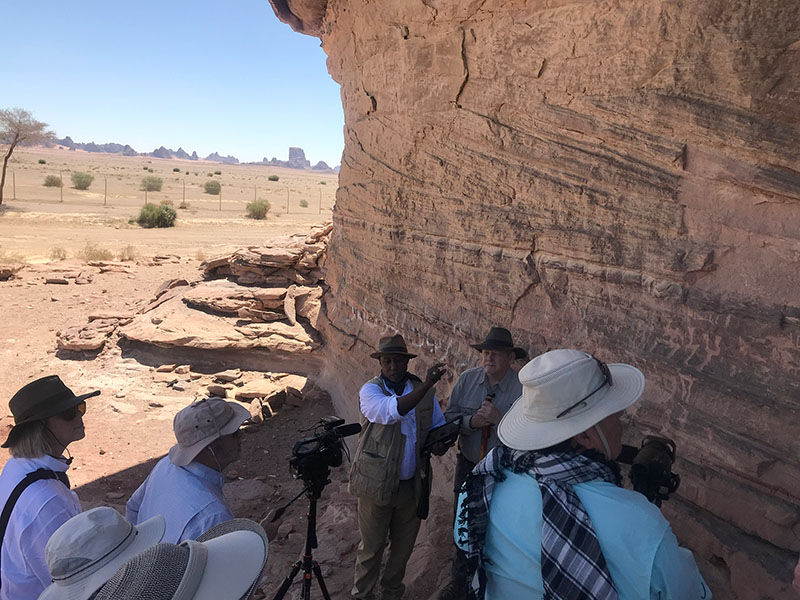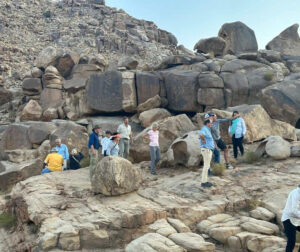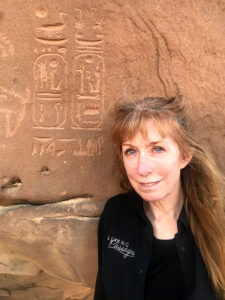Documentation of Midian – How do we know Moses was Here?
By Jennifer Bartlett
Midian (Madian in Arabic) is mentioned in the Bible over 60 times and in the Quran at least ten times. Known to many as the land where Moses fled from Egypt in Exodus 2:15-22, Midian/Madian was home to the priest Jethro, who is also called Reuel and is known by locals as Shu’ayb. Although the exact location of Jethro’s home is disputed, it was almost certainly in an area now called the Tabuk Province. Its northern border touches modern-day Jordan, and the Gulf of Aqaba graces the peninsula of its west coast. This area is rich with local traditions and site names that support various details of the biblical account, and right in the heart of the province is the city of Al Bad’, which locals call Madyan. Even more compelling, according to French archaeologist Guillaume Charloux, “there is a general scientific consensus that Madian is the oasis of Al Bad’.” Link to the report is here.

There are several landmarks that historically have been associated with either the Midianites or the land belonging to these descendants of Abraham. Midian/Madian was a son of Abraham through his wife Keturah after Sarah died (Gen. 25:1-2). “The sons of Midian were Ephah, Epher, Hanoch, Abida, and Eldaah. All these were the children of Keturah” (Gen. 25:4). Sheba and Dedan, for which Arabian cities farther south are named, were his nephews through his brother Jokshan (Gen. 25:2-3). The first known mention of Madian outside of the Bible was discovered in a Taymanitic inscription near Tayma, which “dates back to the first centuries of the first millennium BCE,” but, Charloux cautions, although Taymanitic could have been used earlier, it is “generally dated to between 600 and 400 BCE.”
Mentioned in the Bible over 60 times and in the Quran at least ten times, the most well-known Midianite is Jethro/Shu’ayb, who is an important figure for all three prominent religions. The Mugayr Shu’ayb—the Caves of Jethro—are situated in the oasis of al Bad’, not far from Beer Sa Idni, which locals identify as “the Well of Moses.” It is here that locals believe he may have defended Tzipporah and her sisters from some shepherds who were hoarding the well. Grateful for Moses’ bravery, Jethro, the priest of Midian, invited him to stay and gave him Tzipporah’s hand in marriage. Could the mountain, Jabal Safra, which is near this well, be named in her honor?
An alternate site of the well, the Spring of Moses (‘Ayn Musa) west of al Bad’ at Maqna has received the attention of biblical historians since at least the 19th century. North of Maqna is “Tayyib al-Ism on the coast of the Gulf of ʿAqaba is … believed to be where the Hebrews arrived after crossing the Red Sea,” and according to Charloux, “Jabal al-Lawz and the al-Badr/Ḥallat al-Badr volcano are also often considered to be the actual locations for Mount Sinai and Horeb.”
1 Guillaume Charloux, Samer Ahemed Sahlah & Waleed Ali Badaiwi, “Madian Revealed? Assessing the History and Archaeology of the Oasis of al-Bad’ in Northwestern Arabia,” Semitica et Classica, vol. 14, 2021, p. 98, https://doi.org/10.1484/j.sec.5.129522.
2 The Holy Bible: English Standard Version. Wheaton, IL: Crossway Bibles, 2016, Gen. 25:4.
3 Charloux et al., p. 98.
4 Ibid.
5 Ibid.

What Will They Remember?
SOUTH AFRICA SAFARI



